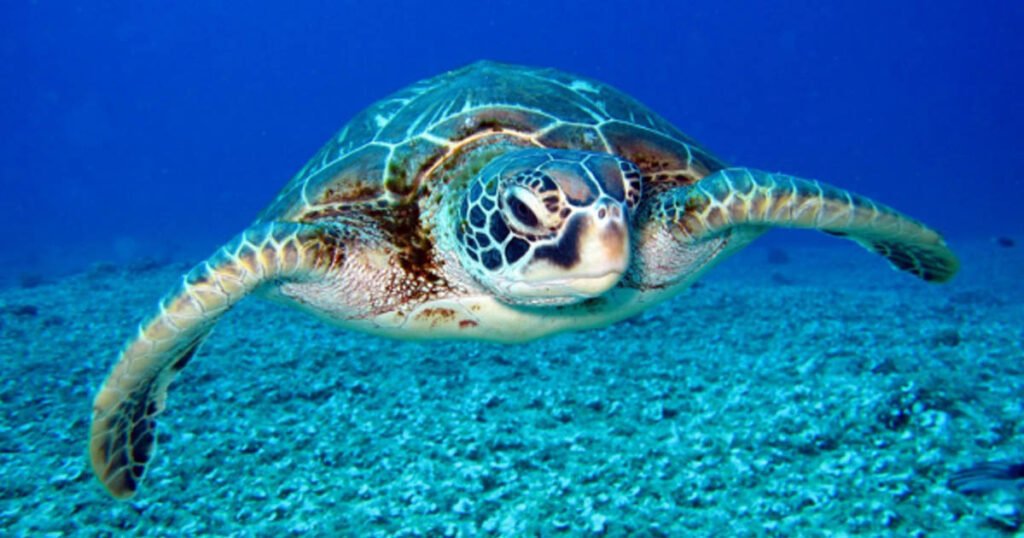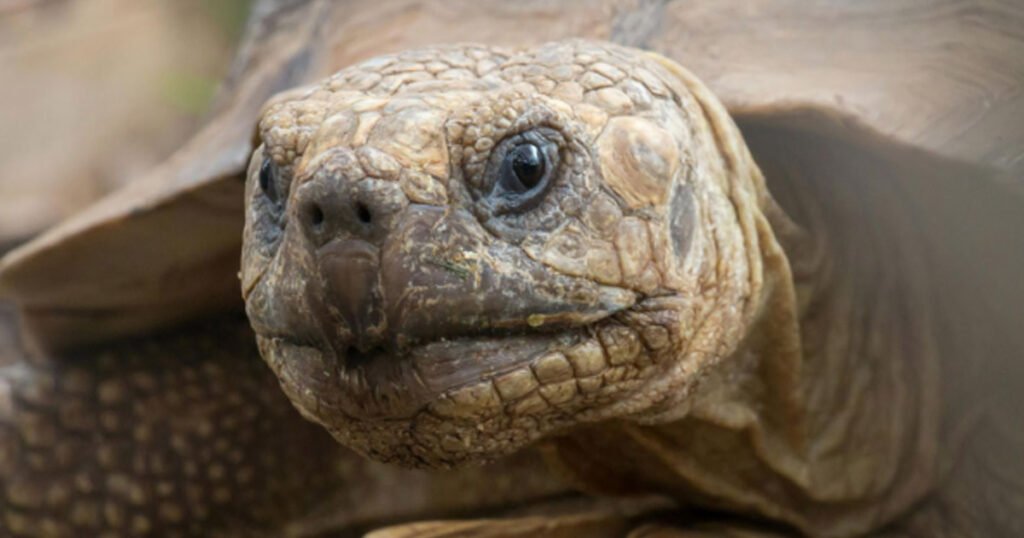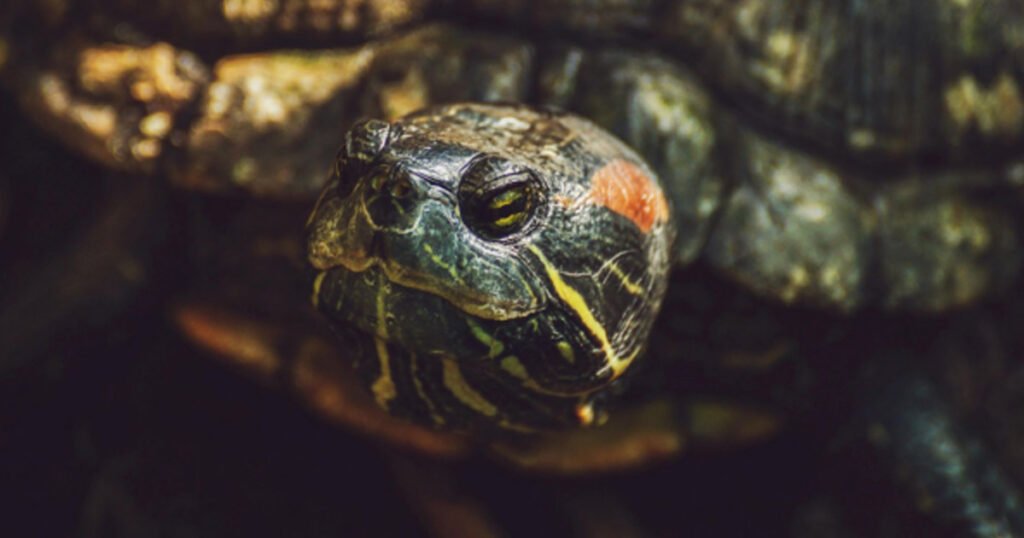Today we’ll talk about what does turtle feces look like. While it may seem nasty, keeping a watch on a pet turtle’s bowel motions is an excellent way to evaluate its health and well-being.
Chelonians poop regularly during their active months, and their consistency and appearance are very consistent. Wonderful news! This means that a change in any of these indicators could be an early indication that anything is wrong with your pet.
Indeed, a reptile’s poop provides a wealth of information about what is going on inside their body. It can tell you a lot about their nutrition and whether they have a parasite infection.
Table of Contents
What Does Turtle Feces Look Like?

So, what does turtle feces look like? Turtle feces, also known as turtle poop or droppings, can vary in appearance based on the turtle’s diet and health. Generally, turtle feces are small, cylindrical, and dark in color, often brown or black. The texture can range from firm to soft, similar to that of other reptiles.
The size of the feces will depend on the size of the turtle and the amount of waste it makes. In aquatic turtles, feces may float or sink in the water, while terrestrial turtles usually defecate on land. It’s important to monitor a turtle’s feces for any changes in color, texture, or frequency, as these can indicate potential health issues that may require veterinary attention.
The Nature of Turtle Poop
Turtle poop, while not the most glamorous matter, can provide valuable insights into a turtle’s health and habits. Here are some things that turtle poop can tell us:
- Diet: The contents of the poop can give us clues about what the turtle has been eating. For example, if you find bits of fish or vegetation in the feces, it shows that the turtle has been consuming those foods.
- Health: Changes in the color, texture, or smell of the feces can indicate underlying health problems. Abnormalities such as diarrhea, blood in the stool, or odd colors may signal digestive problems, infections, or parasites.
- Hydration: The consistency of the poop can reflect the turtle’s hydration state. Dry, hard feces may indicate dehydration, while very watery or loose stool could suggest excessive hydration or a gastrointestinal problem.
- Frequency: Monitoring how often a turtle defecates can help measure its digestive health. Consistent bowel movements are usually a good sign, while prolonged periods without defecation might indicate constipation or other issues.
- Behavior: Changes in the turtle’s poop patterns or location (e.g., if the turtle is suddenly defecating more frequently or in unusual places) could be linked to changes in behavior, diet, or habitat conditions.
- Environment: In captive turtles, studying feces can provide insights into the cleanliness of their enclosure and whether any environmental factors, such as temperature or lighting, need adjustment.
Overall, while turtle poop might not seem glamorous, it serves as an important indicator of a turtle’s overall well-being. Monitoring and analyzing feces can help turtle owners and caretakers discover potential health issues early and take appropriate actions to ensure the turtle’s health and happiness.
Does Turtle Poop Smell?

Yes, turtle poop can have a noticeable odor, especially if it has been sitting for a while or if the turtle has been eating certain types of food. The smell can vary based on factors such as the turtle’s diet, the environment in which it lives, and the presence of bacteria or other microorganisms in the feces.
While the smell of turtle poop may not be as strong as that of some other animals, it can still be unpleasant if left uncleaned. Regular cleaning of the turtle’s enclosure or habitat can help minimize odors and keep a healthy environment for the turtle.
What Does Unhealthy Turtle Poop Look Like?
Unhealthy turtle poop can vary in appearance based on the specific health issue affecting the turtle. Here are some signs of unwell turtle poop:
- Abnormal Color: A poop that is unusually light or dark in color, or includes streaks of blood, may indicate digestive issues, internal bleeding, or the presence of parasites.
- Unusual Texture: Feces that are overly watery, mucous-like, or have a very foul odor can be signs of digestive problems, bacterial infections, or parasites.
- Changes in Frequency: A sudden increase or decrease in the frequency of bowel movements may suggest gastrointestinal issues, dietary changes, or stress.
- Straining: If a turtle appears to be straining or having trouble passing stool, it could be a sign of constipation, intestinal blockage, or other digestive issues.
- Undigested Food: If the feces contain big chunks of undigested food, it may suggest that the turtle is not properly digesting its food, which could be due to inadequate diet, improper husbandry, or underlying health problems.
- Abnormal Shape or Consistency: A poop that is regularly too firm, too loose, or has an irregular shape can be indicative of digestive problems, dehydration, or dietary imbalances.
- Accompanying Symptoms: Unhealthy poop may be followed by other symptoms such as lethargy, loss of appetite, weight loss, shell abnormalities, or changes in behavior.
If you notice any of these signs of unhealthy poop in your turtle, it’s important to consult a veterinarian experienced in reptile care. They can perform a thorough examination, run diagnostic tests if necessary, and suggest suitable treatment to address the underlying cause of the issue. Early detection and intervention are important for ensuring the health and well-being of your turtle.
How Often Do Turtles Poop?

The frequency of turtle bowel movements can vary based on factors such as the species of turtle, its age, diet, and overall health. Generally, turtles tend to poop every few days to once a week. However, this can vary widely among individual turtles and may also be affected by environmental factors such as temperature and activity level.
In some cases, turtles may go longer times without defecating, especially if they are not eating regularly or if they are hibernating. Conversely, turtles that eat a large amount of food may have more frequent bowel movements.
Monitoring a turtle’s poop frequency and consistency can help spot changes in its health and behavior, allowing caretakers to provide appropriate care and address any potential issues.
Role in Aquatic Ecosystems
Sea turtles play several important parts in aquatic ecosystems:
- Maintaining Coral Reefs: Sea turtles graze on seagrass beds, which helps control the growth of seagrass and stops it from becoming overgrown. This grazing behavior supports the health of seagrass ecosystems, which are crucial habitats for many marine species, including fish and invertebrates. Healthy seagrass beds also provide important food and shelter for young fish and other marine organisms.
- Supporting Biodiversity: Sea turtles are an important part of marine food webs. As predators, they help control numbers of jellyfish, sponges, and other invertebrates. By regulating the abundance of these prey species, sea turtles unintentionally support the diversity and balance of marine ecosystems.
- Nutrient Cycling: Sea turtles play a part in nutrient cycling within marine ecosystems. When they consume seagrass and other marine plants, they excrete waste that includes nutrients such as nitrogen and phosphorus. These nutrients enrich the surrounding water and sediments, providing important nutrients for other organisms and adding to the productivity of coastal ecosystems.
- Beach Erosion Control: Sea turtles help keep the health of sandy beaches through their nesting activities. When female turtles make nests and lay eggs, they aerate the sand and create small depressions that trap rainwater. This moisture helps nourish dune vegetation and stabilize coastal dunes, lowering erosion and providing important habitat for beach-dwelling organisms.
- Tourism and Recreation: Sea turtles are iconic marine species that draw ecotourism and recreational activities such as snorkeling, diving, and turtle watching. The presence of sea turtles in marine ecosystems contributes to local economies through tourism income, supporting jobs, and conservation efforts in coastal communities.
Overall, sea turtles play an important role in maintaining the health and function of aquatic ecosystems. Protecting these endangered species is not only important for their conservation but also for the protection of marine biodiversity and the sustainability of coastal ecosystems.
Read More: What Are Sea Turtle Predators
Conclusion
To maintain the general health of your turtle, it is essential to observe and comprehend its feces. What does turtle feces look like? Differentiating healthy and unhealthy feces based on appearance, texture, and consistency can help detect potential problems early on, such as constipation, diarrhea, or parasites.
If you suspect an issue with your reptile’s health, you should always seek professional help. By adhering to these instructions, you can help your turtle’s health and have a thriving, happy pet.
